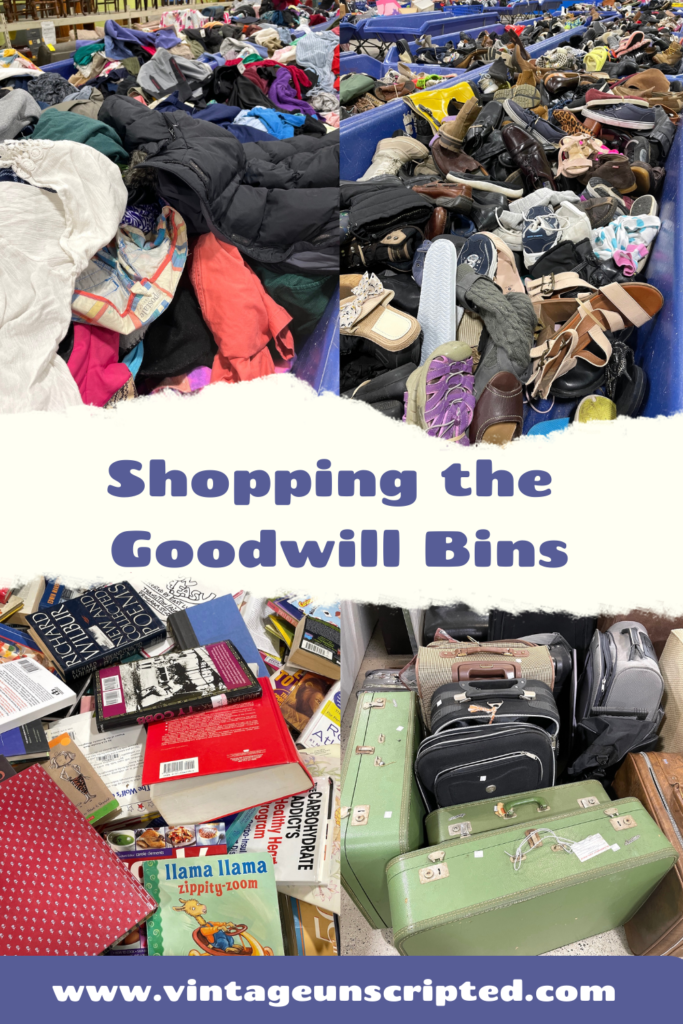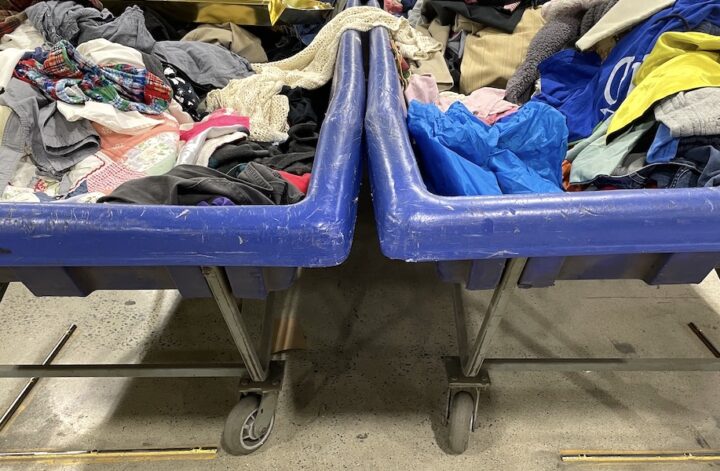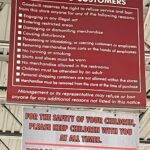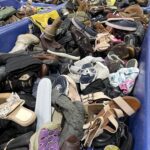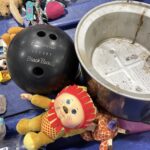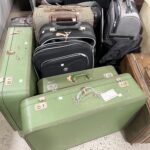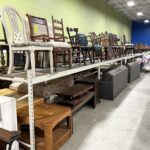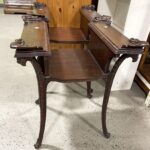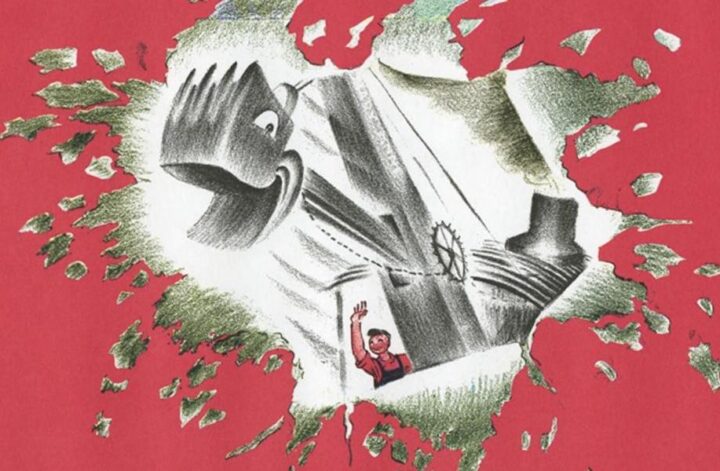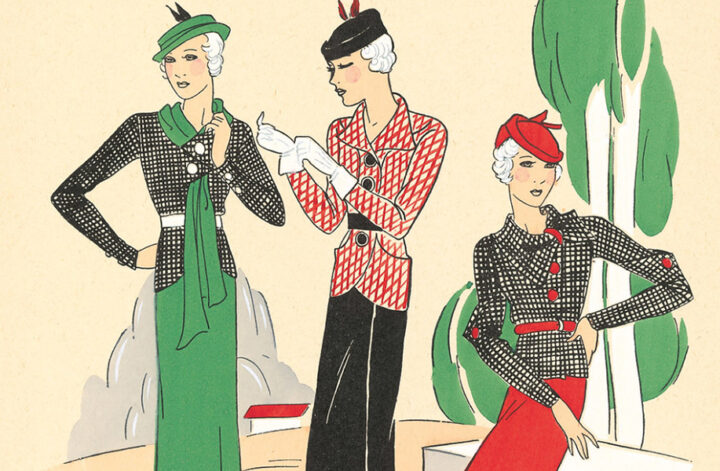If you follow vintage sellers on Instagram, you’ve probably seen posts about their thrift hauls at a Goodwill Outlet, commonly called the Goodwill Bins. The scores you see might lead you to believe that the Bins are a wonderland of blockbuster finds just waiting for you to come and harvest. Not exactly. While you can find some wonderful things, it’s not the case that you prance merrily through and fill your cart. You have to dig for what you find. And the gods of thrifting luck need to be on your side.
But you can’t beat the prices. You pay by the pound, excepting furniture, books and some other pieces. Some days you score. Some days you don’t. As we said before, the thrifting gods need to be on your side. At the Goodwill Outlet in Hudson, NH in late August, I rolled out a cart with at least 15 winter coats and fleeces for under $40. (The coats have been washed and are waiting for the local non-profit coat drive.) My friend and I were the only ones grabbing winter gear; we would have had much more competition had it been October.
How the Goodwill Bins Work
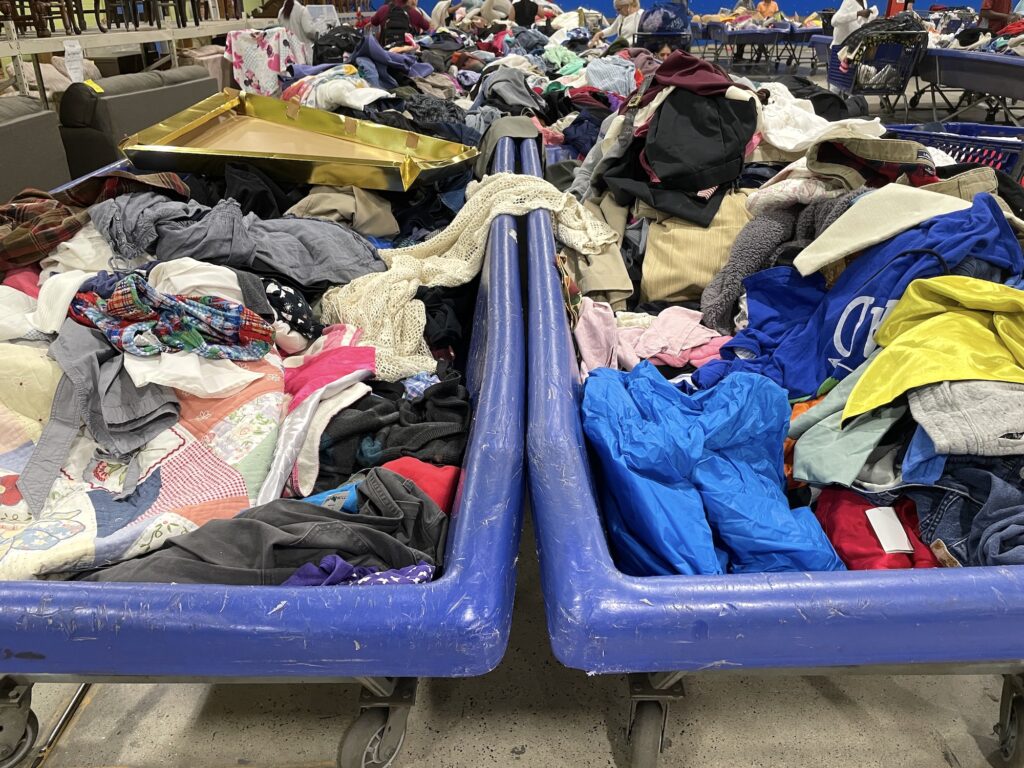
Big blue waist-high bins are rolled onto the floor, each with a different category of merchandise. Books, clothes, linens and shoes get their own bins, what’s left is tossed into general merchandise bins. Islands of bins are set up two wide by three or more long, all with the same type of merchandise. There might be a couple islands of clothes, a couple islands of general merchandise, some bins of books and some bins of shoes during an average rotation. Picked over bins are rotated out regularly and new ones are rotated in. How and when this happens probably has a pattern, but since I am an occasional shopper and not a pro, the pattern eludes me.
When the fresh bins (fresh being a relative term) are rolled in, they are 100% off limits until the Goodwill staff says “go.” In Hampden, CT, where these photos were taken, buyers can surround the new bins and look, but they cannot touch anything. Not only will the other shoppers call you out, the Goodwill staff will issue a yellow card. In Hudson, NH, buyers and their carts need to stand behind a line at the front of the store until the new bins are placed.
When the go ahead is given, a frenzy happens. People grab things and stuff them in their carts. Nobody is checking for flaws, that happens after. And yes, I have seen near fights. There are flea marketers, online and consignment store sellers who shop the bins for their inventory. Their income depends on their merchandise and they are not playing. Getting in the scrum on a first visit is a very brave move.
After the pros (and others) are sure all the gold has been gleaned from the current rotation, they head off to the side to review what they have and return unworthies while awaiting the next rotation. They swap stories, read, play games, go outside for a snack or just sit and wait. Some buyers come with small children, but I can’t remember ever seeing a child having a tantrum. They’re used to the rhythm of the day and go with it. Truth told, there is a lot more waiting than there is digging.
At the checkout, you’ll roll your cart onto a floor scale and the cost will be determined. Some people check out multiple times during the day so they always have an empty cart.
What Will You Find?
Everything.
In the linen bins, you will find curtains, towels, handmade afghans, bedding, quilts and more. One woman showed me three nearly pristine 1930s quilts. But she had to go through a tangle of other stuff to find them.
The books, shoes and clothing bins are a jumble. Some Goodwill outlets rubber band shoe pairs together, but that hardly ever survives the frenzy.
The everything bins are pretty much everything else. Games, toys, kitchen gear, holiday decor, baskets, sports equipment…you name it. I’ve seen a set of marching band quad drums and a bass drum, both complete with marching harnesses. The best thing I’ve ever fished out was three oversized alphabet blocks that must have been handmade for a store display. They were so heavy the cashier charged me half price (thank you, sir). No, the blocks aren’t for sale, they were for an expectant gramma who is setting up a baby’s room.
There may also be furniture, with pieces priced individually.
Hacks for Goodwill Bins Shopping
Have zero expectations. You can’t control what fills the bins on any given day. Bins in areas with a posher demographic will have better things, just like thrift stores.
Bring an Ikea bag in case you don’t get a cart.
Wear gloves, although I usually don’t.
Even if you don’t get into the scrum for new bins, and I only do that about half the time, you will still find awesome things.
If you find a lot of menswear or kids’ clothing in a bin, it’s likely the whole bin is the same thing, although that isn’t a hard and fast rule. I’m not exactly sure how stuff makes its way into the bins, but I suspect that bags of donations are opened and poured in, so it makes sense that similar things would be together.
Look everything over carefully. Don’t be enamored by the price. Quality not volume. Of course you’ll get stung a few times with flaws you didn’t see until you got home.
Enjoy the experience.
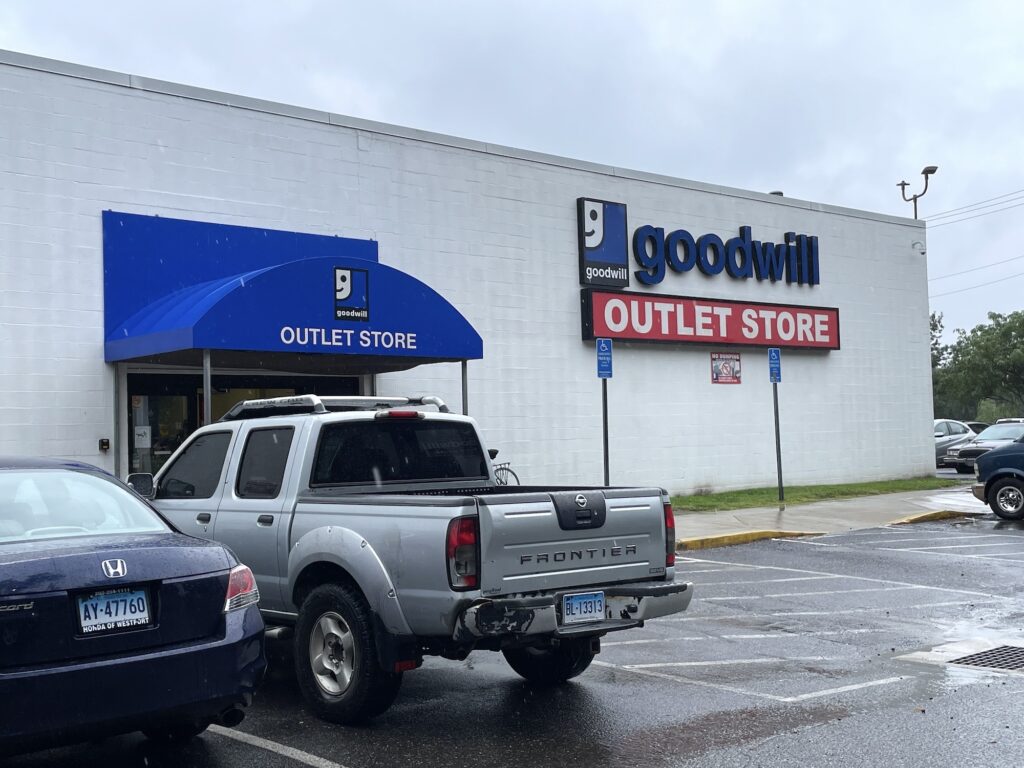
Takeaways From Bin Shopping
The Bins are no different than the rest of the secondhand market. They are profoundly diluted with fast fashion, particularly from Walmart and Kohls. Good for you if you can give those clothes a second life. You will find some excellent quality vintage garments, particularly sweaters and suit jackets for men and women, but you’ll have to sort through a lot of fast fashion to find them.
Donors could do a better job deciding what is a donation and what should be recycled. You will wade through some stained and damaged garments that no one could ever wear again. You expect to launder or dry clean things, but there is a percentage of things that are worn beyond redemption. (I’ve never found used underwear or socks though, they must get weeded out in the back room because you know they get donated.) Spare a thought for thrift workers who have to deal with that every single day.
